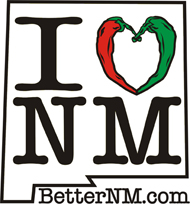 Maggie says:
Maggie says:
A dinner conversation tonight came back to the same issue planners, shoppers, and business folks have been debating for ages: what to do about parking? No easy answers here in the “The Peak of Good Living,” but lots of the same circling ‘round. See, my little town finds itself in a modern pinch these days. For decades now, “progress” in Apex has been touted as new shopping centers and residential subdivisions, entities built for the auto at any cost. Yet downtown on Salem Street, true business revitalization is taking place. Boarded-up buildings are becoming shops, cafes, a great Mexican restaurant, and now a full-blown fine dining restaurant, which was where we were tonight.
Salem Street epitomizes our notion of the small town “Main Street.” Picture a narrow street where buildings sit right on the sidewalks. Picture parallel parking. Picture rocking chairs in front of shops. Picture folks waving across the street at each other. All of that’s happening on Salem Street. But these days, so is the traffic.
Small towns that have become suburbs are now facing a really interesting dilemma when it comes to promoting their long-neglected Main Streets. When shoppers are used to parking lots the size of football fields and shopping centers so vast one must drive from big box store to big box store, what will it take to make them realize that suburban expectations will not only never be satisfied by a “Main Street” experience, but that bending to the suburban lifestyle is exactly what destroyed Main Streets in the past, and can do it again in a heartbeat. The story goes like this: a downtown shopper is frustrated that parking’s hard to come by and complains about it with friends the next day. But the reality is that the frustrated shopper didn’t drive off in a rage when she didn’t see a spot right away. Instead, she calmly found a spot that wasn’t right in front of the store, then she took a tiny little walk into the store. It probably took her longer to park than at Best Buy, but she did it because of the unique offerings at that particular shop. And while she’s parked, chances are really great that she’ll poke into the other shops downtown, maybe grab a cup of coffee and a slice of cheesecake, maybe run into a friend unexpectedly and end up devouring enchiladas a few doors down.
The story goes like this: a downtown shopper is frustrated that parking’s hard to come by and complains about it with friends the next day. But the reality is that the frustrated shopper didn’t drive off in a rage when she didn’t see a spot right away. Instead, she calmly found a spot that wasn’t right in front of the store, then she took a tiny little walk into the store. It probably took her longer to park than at Best Buy, but she did it because of the unique offerings at that particular shop. And while she’s parked, chances are really great that she’ll poke into the other shops downtown, maybe grab a cup of coffee and a slice of cheesecake, maybe run into a friend unexpectedly and end up devouring enchiladas a few doors down.
When we’ve parked near a street full of interesting options, anything is possible, and everything’s open to us. In the opposite scenario, the woman goes into Best Buy, comes out and gets back into her car, and drives home. Nothing unexpected, and everything very corporate-minded. Efficiency, right? What’s that bumper sticker? Oh yeah: “Efficiency=Death.”
“Business advocates” talk tough about parking and the need for shops to be easily accessible for their customers, but they forget this simple notion: we like the hard-to-get-to. You know: the one we can’t have, the impossible dream. Now don’t get me wrong; I’ve said parking is far easier downtown than people might have us believe. But the little shops in downtown Apex are doing amazingly well. People are crammed into those prime spots because they want to be downtown. Downtown offers different, unique, local. And people will do what they can to get it. And let’s not even begin to talk about how a tearing down one of our great, railroad-era buildings in Apex to make room for a parking lot is going to solve anything…
And let’s not even begin to talk about how a tearing down one of our great, railroad-era buildings in Apex to make room for a parking lot is going to solve anything…
In the South Valley, these same issues are going on, with exciting proposals being considered. A recent survey done by the Resource Center for Raza Planning showed that when it comes to consumer choices, South Valley residents prefer local options to cheap ones. That’s the magic answer for community development enthusiasts like myself, who see strong, truly local economies as the only way we can reconnect with our neighbors and where we live. Another effort that I know a little something about – the Isleta Boulevard and Village Centers Sector Development Plan – will drastically rethink parking guidelines if it’s passed. It's about getting away from those 3-acre lots, and toward shared parking that promotes connection, thinking smaller, and living more in scale with reality instead of day-after-Christmas shopping traffic.
Planning is everything and everywhere; that’s why it’s so much fun. What seems mundane can actually be the lifeblood, the heart, the identity of a place. And who wouldn’t want to work on that stuff?
Coming soon: Is being able to order $18 salmon really the answer for downtown Apex? A tribute to balance.
Thursday, December 22, 2005
Parking: When Main Street and Suburbia Collide
Subscribe to:
Comment Feed (RSS)





|